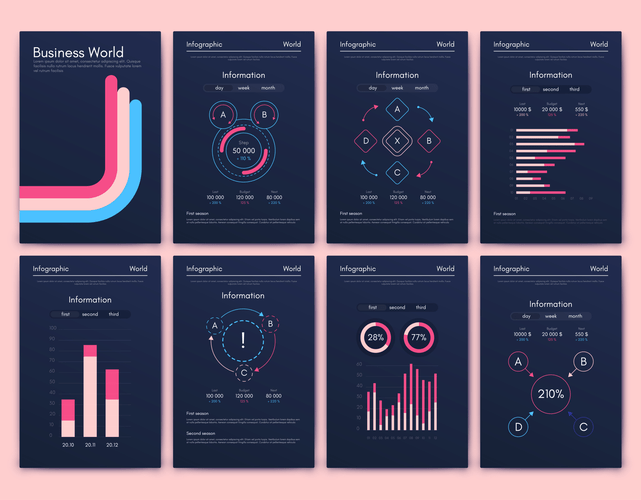Below, we’ll take a closer look at the different types of cloud computing, including deployment and service models. Software as a Service provides a finished product that is operated and managed by a service provider. In most cases, people referring to Software as a Service refer to end-user applications. Clover offers features important to larger retail businesses, such as third-party apps, employee management, loyalty programs, marketing and customer management. Businesses can see who top sellers are, which makes it easy to recognize top performers. Hybrid cloud offers flexible resources because of the public cloud and secure resources because of the private cloud.
- Many applications designed originally for the desktop (e.g., Adobe Creative Suite) are now available as SaaS (e.g., Adobe Creative Cloud).
- Physically, the hardware resources are pulled from a variety of networks and servers distributed across different data centers, all of which are managed and maintained by the cloud service provider.
- Multiclouds are a cloud approach made up of more than 1 cloud service, from more than 1 cloud vendor—public or private.
- The cloud infrastructure is located inside the organization and it is not shared with anyone without the permission of the organization is called the private cloud.
- If you have a lot of international clients, you’ll be happy to know that PayPal Zettle can process over 130 currencies.
- Cloud computing services and technologies have transformed how organizations procure and manage infrastructure.
- The bare-metal IT infrastructure used by public cloud providers can also be abstracted and sold as IaaS, or it can be developed into a cloud platform sold as PaaS.
A denial-of-service attack is intended to shut down a machine or network, depriving legitimate users of expected services or resources. Cloud computing services also make it possible for users to back up their music, files, and photos, ensuring those files are immediately available in the event of a hard drive crash. Cloud computing is still a fairly new service but is being used by a number of different organizations from big corporations to small businesses, nonprofits to government agencies, and even individual consumers.
Types of cloud services:
Start your next project, explore interactive tutorials, and manage your account. Cloud Storage Globally unified, scalable, and highly durable object storage for developers and enterprises. Compute Engine Computing infrastructure in predefined or custom machine sizes to accelerate cloud transformation. Cost optimization framework Get best practices to optimize workload costs. Blockchain Node Engine Fully managed node hosting for developing on the blockchain. Google Cloud Backup and DR Managed backup and disaster recovery for application-consistent data protection.

SaaS also eliminates the need to have the application installed locally on each user’s computer, allowing for better methods of group or team access to the software. The features offered by POS systems don’t matter if employees can’t use them. This is why our panel of experts turned to third-party review sites to get actual users’ opinions about key factors, such as ease of use. The learning curve should not prohibit retailers from using a system’s most robust features.
Cloud Computing Security Data
When we talk about data integrity, we’re referring to the overarching completeness, accuracy, consistency, accessibility, and security of an organization’s data. Together, these factors determine the reliability of the organization’s data. Data quality uses those criteria to measure the level of data integrity and, in turn, its reliability and applicability for its intended use. The differences between public clouds, private clouds, hybrid clouds, and multiclouds were once easily defined by location and ownership. So while we compare the differences below, there are plenty of caveats.
Investopedia does not include all offers available in the marketplace. Cloud computing can also be provided by a distributed set of machines that are running at different locations, while still connected to a single network or hub. Block storage allows developers to set up a robust, scalable, and highly efficient transactional database. As each block is a self-contained unit, the database performs optimally, even when the stored data grows. Ensuring your company’s critical data is safe, secure, and available when needed is essential.
Digital Engineering For Innovative, Transforming & Inspiring Businesses
It is used by organizations to build and manage their own data centers internally or by the third party. It can be deployed using Opensource tools such as Openstack and Eucalyptus. Public cloud is maintained by the cloud service provider, so do not need to worry about the maintenance. In public cloud, computing resources are managed and operated by the Cloud Service Provider . SaaS or Software as a Service uses cloud computing to provide users with access to a program via the Internet, commonly using a subscription service format. Platform-as-a-service is considered the most complex of the three layers of cloud-based computing.

Cloud computing is named as such because the information being accessed is found remotely in the cloud or a virtual space. Companies that provide cloud services enable users to store files and applications on remote servers and then access all the data via the Internet. This means the user is not required to be in a specific place to gain access to it, allowing the user to work remotely. Enterprise cloud offer the https://www.globalcloudteam.com/ exact same advantages as personal and public clouds, consisting of versatility, fast provisioning of calculated power, and a virtualized and scalable environment. Much like private clouds, enterprise clouds provide “personal access” and are controlled by either a single organization or consortium of businesses. Many organizations benefit from the agility, scale, and pay-per-use billing that cloud services offer.
Infrastructure as a Service (IaaS)
64% were completely new to cloud computing and needed fundamental training. Check out the list of PaaS software that can help you create platforms to run small applications for yourself and for your clients. When we move to the cloud and decide to go with IaaS—in this case, we are not bothered about the server, disk, and network stack. Because it works with every user, the community cloud is adaptable and scalable. Users can alter the documents according to their needs and requirements.
A Lake House on AWS connects your data lake, your data warehouse, and all your other purpose-built services into one shared catalog. Once you build your Lake House in AWS, you can store, secure and analyze your data, and control its access. Learn the full benefits and how to prepare to build a Lake House in this blog.
Cost effectiveness
It is geared toward enabling application development, customization, and deployment. 75% of leaders are actively developing and creating new products and features within the cloud. According to Gartner research, companies will spend over 45% of their IT spending on cloud https://www.globalcloudteam.com/what-are-cloud-technology-solutions/ solutions rather than traditional IT by 2024. Now if we think of PaaS, we should not be worried about runtime, framework, and operating system along with the components in IaaS. There’s never been a better time to build your credentials with IT certifications.

A virtual computing environment can be set up in a variety of ways depending on the chosen Cloud Deployment Model. Many organizations handle information that must be able to pass compliance standards. For the organization to be HIPAA-compliant, it must not only maintain those high standards itself, but the cloud provider must be HIPAA-compliant as well.
The Future of Cloud Services
This can be done periodically as a batch process, or continuously in real time through processes like change data capture. Data profiling, also known as data quality assessment, is the process of auditing an organization’s data in its current state. This is done to uncover errors, inaccuracies, gaps, inconsistent data, duplications, and accessibility barriers. Any number of data quality tools can be used to profile datasets and detect data anomalies that need correction. Because there is no need to re-create or track down datasets, labor costs are reduced, and manual data entry errors become less likely.
